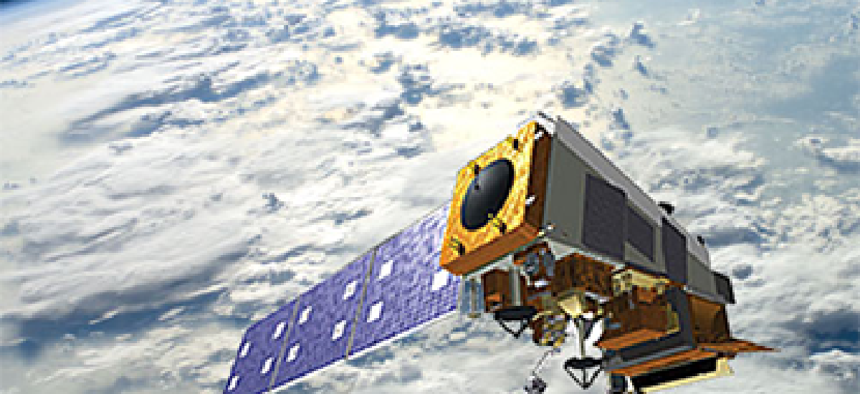Next-generation polar satellites pass key reviews

The Joint Polar Satellite System's first new satellite -- JPSS-1 -- is on budget and on schedule toward its 2017 launch.

The Joint Polar Satellite System is a NASA/NOAA effort. (NASA image)
The National Oceanic and Atmospheric Administration's next generation of polar orbiting weather satellites appears to be on track, with the Joint Polar Satellite System's first new satellite -- JPSS-1 -- on budget and on schedule toward its 2017 launch.
According to NOAA officials, JPSS-1 just completed two key programmatic reviews at NASA's Goddard Space Flight Center and passed with flying colors. The reviews, known as the Program System Definition Review (SDR) and JPSS-1 Mission Preliminary Design Review (MPDR), show the program is "on track" to meet higher-level critical milestones slated for later this summer. The MDPR is itself a milestone for JPSS-1, which highlights how the satellite, ground system, launch service and operations all come together to achieve mission objectives.
"Completing these reviews demonstrates the success and progress we are making within the overall JPSS program," said Harry Cikanek, NOAA JPSS program director. "I am proud of the work our combined NOAA/NASA team has done to aggressively implement this program and deliver our products on budget and on schedule."
For several decades, the United States has operated two polar-orbiting satellites – one by NOAA and the other by the Air Force's Defense Meteorological Satellite Program – that orbit the Earth in a north-south orbit several hundred miles overhead, providing measurements like storm direction, speed and intensity, which are fed into data-driven forecast models.
Those satellites, however, are at the end of their projected lifespan, and NOAA has been criticized for delays in the JPSS program that could leave the agency without critical weather data for as long as 17 months. NOAA and NASA have sought to mitigate that risk with the Suomi National Polar-orbiting Partnership (NPP) -- a demonstration satellite converted to a polar orbiting satellite and launched in October 2011.
Technically speaking, the Suomi NPP is part of the JPSS program, but it lacks the advanced capabilities of the next-generation satellites, and is intended to simply bridge the gap between the previous generation of aging polar-orbiting satellites and JPSS-1.
The $13 billion JPSS program – which will ultimately put two more satellites up in the air with a series of high-tech instruments that will greatly improve forecasting back on Earth – has a history of delays, ballooning costs and management problems, according to the Government Accountability Office.
Yet it appears the development of at least JPSS-1 is beginning to smooth out. Next up for JPSS-1 are two more reviews over the summer that will monitor overall readiness, followed by the Critical Design Review in early 2014.
The next major review for the entire JPSS project will be in 2015.






